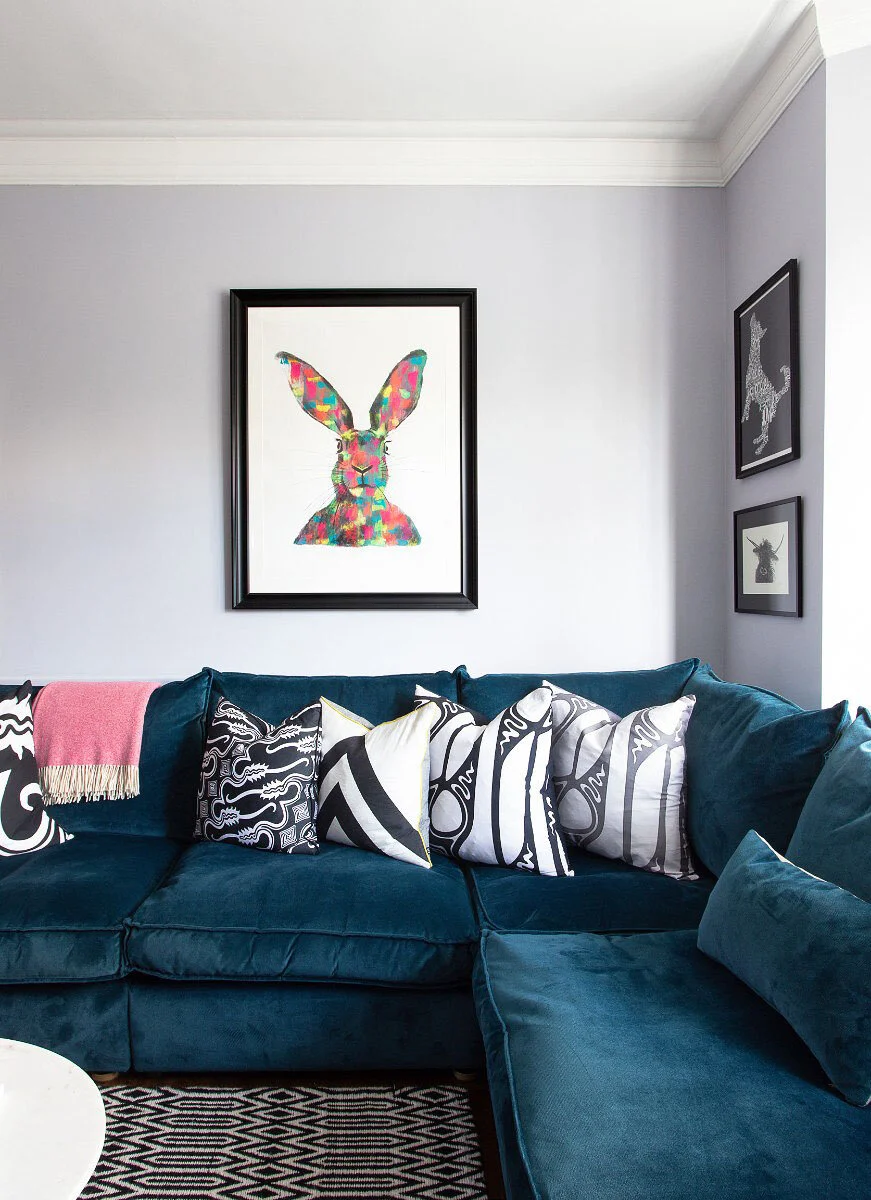Creating Dynamic Adaptable Living
Creating dynamic and adaptable living spaces to meet the diverse and complex needs of modern living, is becoming more and more important to consider when designing.
Creating dynamic and adaptable living spaces to meet the diverse and complex needs of modern living, is becoming more and more important to consider when designing.
There are many factors for this trend in multi-purpose spaces, one major one is the sheer fact that properties are getting smaller and particularly in urban settings space is at a premium resulting in more people living in tiny studio flats and the like.
I am fascinated by ways to adapt space and have always designed in a manner that puts spatial planning front and centre in ensuring space is used effectively to meet all the clients needs in the most effortless way.
This is why at LitterArty, we believe in creating interiors that not only exude character and style but also prioritise functionality and adaptability. Our mission is therefore to design living spaces that can effortlessly evolve with the changing needs of our clients. Welcome to a world where dynamic adaptability reigns supreme.
In the realm of dynamic adaptable living, every aspect of a space is carefully crafted to enhance its flexibility. Gone are the days of standardisation and rigid floor plans. Instead, we embrace the beauty of versatility, enabling homeowners to effortlessly transform their living areas to suit different occasions, moods, and lifestyles.
One of the key elements we consider when designing a dynamic adaptable living space is the layout. By utilizing open floor plans and multipurpose rooms, we create an environment where the boundaries between living, dining, and entertainment spaces become fluid. This allows for seamless transitions and encourages creativity in how the space is utilized.
Furniture plays a vital role in creating a dynamic living environment. We prioritize pieces that are not only aesthetically pleasing but also versatile in their functionality. Modular furniture, for example, allows homeowners to rearrange and reconfigure their seating arrangements as needed, catering to both intimate gatherings and larger social events. Additionally, incorporating furniture with hidden storage compartments ensures that every square inch of a room can be utilized efficiently.
Lighting is another crucial element in creating adaptability. By using a combination of ambient, task, and accent lighting, we provide homeowners with the ability to create different moods and atmospheres at a moment's notice. With the rise of smart lighting systems further enhance this adaptability, allowing residents to control the intensity and colour of lights through their devices.
Technology also plays a significant role in dynamic adaptable living. Integrating home systems enables homeowners to control various aspects of their space, such as temperature, security, and entertainment, from a centralized hub or their smartphones. This seamless connectivity adds a layer of convenience and adaptability to everyday living.
Lastly, we understand that true adaptability extends beyond the physical aspects of a living space. It encompasses the ability to accommodate changing needs and lifestyles. Our design philosophy revolves around creating spaces that are not only beautiful but also functional for all life stages. From incorporating accessible features for individuals with disabilities to designing spaces that can be easily modified to accommodate growing families, we strive to future-proof our designs.
At LitterArty, we truly believe that dynamic adaptable living is the future. By combining thoughtful design, versatile furniture, smart technology, and a focus on evolving needs
HowTo - Photograph Your Space
In our series of Handy HowTo’s this article covers tops tips on how to best photograph your interiors without hiring a professional. Whether it is pre-project photos showing the space at it’s most basic or finished project images capturing the interiors at their best.
Do you often find that you look at a room, say you’re visiting a beautiful hotel, or you’ve just revamped your home, and you’re blown away (or at least pretty chuffed), by the interior you are faced with. So you lift your camera and snap away, only to be rather deflated by how small, unimpressive or totally different in colour the photo of this space looks once held motionlessly in a snapshot?
This is a very common issue, in capturing many aspects of life but one that is particularly problematic when capturing interiors specifically. It’s relevant to estate agency images (you know how often house details can be misconceiving), or when trying to share a piece of great interior design.
Simply, getting good photos that truly capture your interiors is not always as easy as it looks. There is a reason there are professional photographers that specialise in Interiors as it takes a certain skill and specific approach.
Yes of course there is also a lot of emphasis on editing and the pictures you see of beautiful and inspiring interiors in household magazines are all professionally shot (a professional photographer I am most definitely not). However, there are a few tips that don’t involve an expensive camera or photographic education, when applied can seriously improve your interior photography.
These tips aren’t only for capturing finished projects but are highly useful for obtaining the best photos for showing the space to be worked on when kicking off a design project. Whether this is simply for your own records, like a before and after, or you are using our HowtoHome service, and need to provide some images of the space you are wanting designed. The better the images, the more accurate the finished design will be to your individual space and the more impressive the comparison will be.
Top Tips:
Natural light is pivotal. Light bulbs cast bad shadows and the camera does not have the capability to interpret the artificial light for what it is (as our eyes see it).
Overcast days are actually the best for capturing interiors. Woohoo! that’s a relief in the UK.
Straight lines are king. Basically keep your verticals (i.e. door frames etc) vertical and your horizontals exactly that, horizontal.
Use a tripod if you can so that your images are level and not blurred (more important for images of finished projects).
For capturing: ‘Pre-project’ spaces to be designed - de-clutter and keep the area as open as possible, removing as many items you no longer want included in the new design as possible.
For capturing: 'Completed-project’ spaces - staging is key! Remove all items that aren’t purposeful to your overall aesthetic, making sure there are no used cups and plates lying around for example. Remove and out out of sight any hanging or trailing electrical cables etc.
Creating space - this is the second most pivotal aspect of interiors photography and often one of the hardest. Don’t be afraid to move furniture to suit the composition of the photograph. Even if it wouldn’t work in reality it may look better on the image. Take shots from outside of the space in through the door, at that perfect point where the doorframe isn’t in view. This helps give aspect.
Wide angle - if you have access to a wide angle setting on your phone (0.5 setting on the iPhone 11 Pro) or on your camera, then great, but DON’T abuse it! If you push too wide an angle to capture a room you also risk distorting the actual space and presenting an unrealistic snapshot. Keep it mid range and take multiples instead of trying to get a whole room in one image.
Get up close - it’s all in the detail. While it is important to have an overview of the room don’t forget to get close-ups of notable, well designed or aesthetically important details. These images can work wonderfully to show depth of field, especially if you are able to use settings that blur the background and focus on the detail you are wanting to highlight.
On a camera shoot on RAW setting.
Finally, edit, edit, edit - a seemingly dull picture can be effectively edited to brighten, increase exposure and up the contrast. The main aspects to tweak aside the above are; highlights, shadows and noise reduction.
Most mobile phones have fantastic cameras and editing tools, so go forth and experiment!
Let’s be honest most of us are not taking interior magazine quality images, but that’s no reason not to achieve the best results you can with little effort.
Good luck and have fun.



